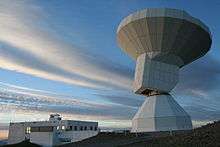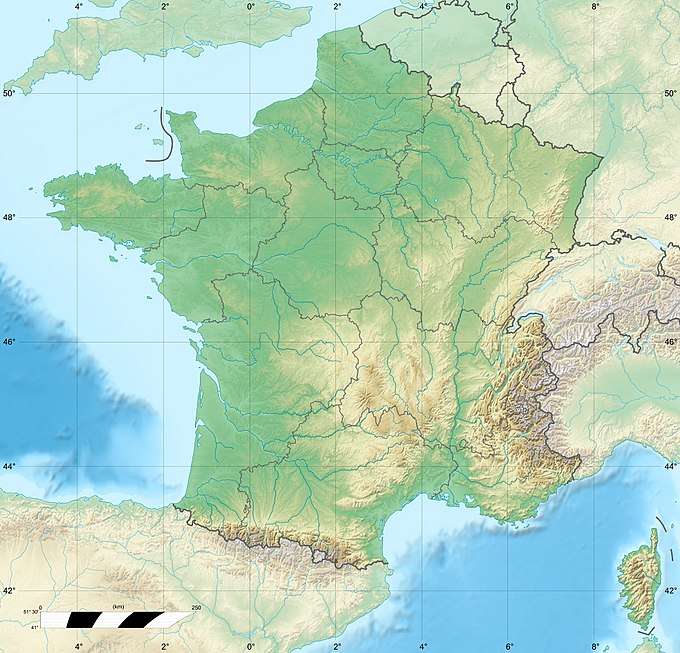Institut de radioastronomie millimétrique
 30 m single-dish radio telescope located on Pico Veleta | |
| Alternative names |
IRAM |
|---|---|
| Location |
Grenoble, Saint-Martin-d'Hères, France |
| Coordinates | 45°11′37″N 5°45′38″E / 45.19358°N 5.76069°ECoordinates: 45°11′37″N 5°45′38″E / 45.19358°N 5.76069°E |
| Website |
www |
| Telescopes |
Altitude SEE Test European Platform IRAM 30m telescope Northern Extended Millimeter Array |
 Location of Institut de radioastronomie millimétrique | |
|
| |
The Institut de radioastronomie millimétrique (IRAM) operates two radio astronomy telescopes at millimeter wavelengths, which are open to the international astronomical community: the 30 m single-dish radio telescope located on Pico Veleta (2850 m) in the Spanish Sierra Nevada (Andalucia, Spain), and the six-antenna Plateau de Bure Interferometer (2550 m) in the French Alps. Both sites are at high altitude to reduce the absorption by water vapor. The telescopes are supported by the IRAM offices and laboratories in Granada and Grenoble, respectively. IRAM, which is directed by Karl Schuster, has its headquarters in Grenoble.
IRAM was founded in 1979 and is operated as a French-German-Spanish collaboration. Its partner institutes are the Centre national de la recherche scientifique (CNRS, France), the Max Planck Society (MPG, Max Planck Gesellschaft, Germany), and the Instituto Geográfico Nacional (IGN, Spain). The principal activity of IRAM is the study of mostly cold matter (interstellar molecular gas and dust) in the solar system, in our Milky Way, and other galaxies out to cosmological distances in order to determine their composition, physical parameters and history. IRAM also hosts the research laboratory and platform Altitude SEE Test European Platform (ASTEP).
In 2016, The University of Michigan Astronomy Department signed into an agreement allowing access to the NOEMA (the NOrthern Extended Millimeter Array) Interferometer of IRAM.[1]
References